I have an polar grid array in numpy with values in range from -31.5 till 80. We want to detect the clusters based on neighbour values.
Something like this:

And this is a good example for our polar grid structure (don't look at the arrows):

Now the point, what is the best way to use dbscan for this to get the number of detected clusters ?
Do you also need a printout of the numpy array ?
Thank you!